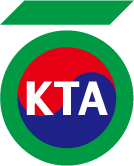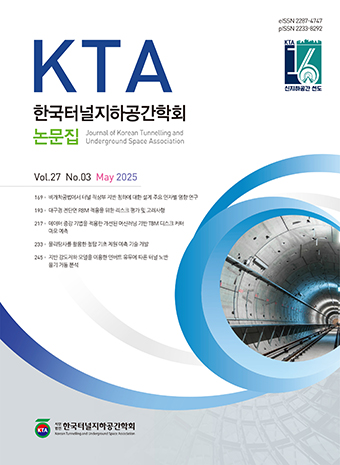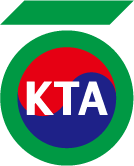Instructions for Authors
Ethical policy
(1) The manuscript should be original, not having been published previously.
(2) A research paper published at a conference or in un-registered literature should be improved and completed to be considered as an original paper.
(3) Authors should submit an Author's Checklist. Submission of the Author's Checklist is considered to denote agreement with the research and publication ethics defined by the KTA.
(4) Author should provide detailed information about the paper to the editor and confirm any ethical issues pertaining to the reproduction of a previously published paper.
(5) One of the authors should be the member of the KTA. Membership can be awarded after the evaluation on the applicant’s academic background.
(6) JKTA (Journal of Korean Tunnelling and Underground Space Association) uses the CrossCheck plagiarism screening to detect instances of overlapping and similar text in submitted manuscripts. CrossCheck is a multipublisher initiative to screen published and submitted content for originality.
Forms of publication
(1) Submitted manuscripts can be classified as research papers, technical papers and technical notes.
(2) The form of publication should be defined by the author. However, the form of publication can be changed based on the editorial board.
Gendered innovations
In basic and preclinical biomedical research using cells and animals or clinical studies (all human subject research), sex (a biological variable) or gender (a socio, cultural, and psychological trait) should be factored into research designs and analyses and reported in a manuscript as follows.
(1) Cell or animal experiments
a) Cell line or animals’ source, authentication, and biological characteristics should be described.
b) Both sexes should be included in the studies using cells or animals, and the results caused by sex differences should be reported.
c) If only one sex is reported, or included in the study, the reason the other sex is not reported or included should be explained based on reasonable and scientific basis.
(2) Human subject research
a) Sex and gender should be described separately and correctly.
b) Both sexes/genders should be included in the human studies, and the differences between the sexes/genders should be analyzed and reported.
c) If only one sex/gender is reported, or included in the study, the reason the other sex/gender is not reported or included should be explained based on reasonable and scientific basis.
Authorship
(1) Substantial contributions to the conception or design of the work; or the acquisition, analysis, or interpretation of data for the work; AND.
(2) Drafting the work or revising it critically for important intellectual content; AND.
(3) Final approval of the version to be published; AND.
(4) Agreement to be accountable for all aspects of the work in ensuring that questions related to the accuracy or integrity of any part of the work are appropriately investigated and resolved.
Peer review
(1) Editor will check the research ethics such as forgery, falsification, plagiarism, dual submissions of the submitted manuscript.
(2) Every manuscript received is circulated to three peer reviewers. The authors’ names and affiliations are not disclosed to the reviewers during the review process.
(3) The review decision is divided as follows: ‘accept as it is’, ‘accept after editorial revision’, ‘accept after revision subject to reviewers consent’, ‘resubmission’, and ‘reject’.
(4) The finally accepted manuscript will be reviewed by the manuscript editor for consistency of the format and completeness of references.
(5) The manuscript may be revised according to the discretion of the manuscript editor.
(6) All the manuscripts submitted and published by the KTA must conform to this code of ethical conduct unless there are special stipulations in relevant laws or regulations.
Penalty
(1) Anyone who has violated the general research ethics and code of conduct cannot submit manuscripts to the JKTA for three years and will be expelled from membership in case of a regular member. The published paper will be withdrawn from Journal and the cancelation of particular paper will be posted in the journal for six months.
(2) The authors who have requested to withdraw the published paper themselves in the JKTA cannot submit manuscripts to the JKTA for three years.
Publication charge
(1) Authors are charged 120,000 won for the reviewing of a paper. Upon acceptance of the paper, the author(s) are also charged 30,000 won for publication.
(2) Authors are charged 270,000 won for an urgent review of a paper. Upon acceptance of the paper, the author(s) are charged 30,000 won for publication.
(3) Fees for publication should be sent to the editorial office.
Statement of copyright transfer
(1) When a paper is accepted for publication in the Journal of Korean Tunnelling and Underground Space Association, a statement of copyright transfer should be signed by all authors and should be submitted to the editorial office.
(2) Submission of the statement of copyright transfer confirms that all authors follow the research and publication ethics guidelines and that they transfer copyright of the manuscript to the Korean Tunnelling and Underground Space Association.
Preparation
(1) The manuscript should be preferably prepared and typed using MS Word, or Hangul Word Processer with single column and double line spacing on the A4 (210×297 mm) page format
Structure of paper
(1) Manuscripts should follow the following format and sequence:
① Title, ② Authors, ③ Authors’ membership, Authors’ affiliation and position,
④ Abstract, ⑤ Keywords, ⑥ Notation (Alphabetical order), ⑦ Body,
⑧ Author contributions, ⑨ Acknowledgement, ⑩ Reference, and ⑪ Appendix.
(2) Section titles should be bold with the initial letter of the first word a capital letter. Avoid the use of capital letters in the text when English is used in the text.
Title of paper
(1) The title should be short and descriptive. Subtitles also can be used when necessary.
(2) Series of papers on an identical topic can be separately submitted, using “I” and “II.”
(3) For Korean manuscripts, the title should be specified in English below the Korean title. For English manuscripts, the title should be presented in Korean below the English title.
(4) The initial letter of the first word in a title should be a capital letter. Capital letters can also be used for abbreviations or proper nouns.
Authors
(1) The author’s name should be written in Korean as well as in English. The Korean name should appear first and the English name should be placed below the Korean name.
(2) The given name should be written first, and then the family name.
【Example】 홍길동
Gil-Dong Hong
(3) Membership, affiliation and position of the author should be presented below the author’s name. Corresponding author(s) should be specified as asterisk (*).
Abstract
Provide an abstract of more or less than 200 words in Korean and in English.
Keywords
A maximum of five words or phrases should be given at the end of the abstract in Korean and in English.
Sections
Sub-sections can be defined in the following form: 1., 1.1. and 1.1.1., (1).
Figures
(1) Figures are numbered consecutively in the sequence mentioned in the text. A caption and the number of the figure should be centered below each figure.
(2) Captions, descriptions, symbols and notation in and on the figure should be written in English.
(3) Symbols, letters and lines should be clear enough considering a reduction of the figure size.
Photo
(1) Grayscale photos are preferred for the Journal. However, the authors or their institutions must bear the cost of any color if the authors wish to use color in the printed journal.
(2) Photos must be produced with high tones and resolution. Photos must be of sufficient contrast to withstand the inevitable loss of contrast and detail during the printing process.
(3) Photos are numbered consecutively in the sequence mentioned in the text. Captions and the number of the photo should be centered under each photo.
Table
(1) Titles of tables and content should be written in English.
(2) Specify the title and table number in the order of citation and align the top-left of the table.
Author contributions
(1) What authors have done for the study should be described in this section. To qualify for authorship, all contributors must meet at least one of the seven core contributions by CRediT (conceptualization, methodology, software, validation, formal analysis, investigation, data curation), as well as at least one of the writing contributions (original draft preparation, review and editing). Authors may also satisfy the other remaining contributions; however, these alone will not qualify them for authorship.
(2) Contributions will be published with the final article, and they should accurately reflect contributions to the work. The submitting author is responsible for completing this information at submission, and it is expected that all authors will have reviewed, discussed, and agreed to their individual contributions ahead of this time.
【Example】
Conceptualization: Hong, G.D.; Data curation: Jang, Y.S., Choi, Y.; Formal analysis: Kim, C.S.; Methodology: Kim, Y., Kim, G.D.; Software: Kim, Y., Jang, Y.S.; Validation: ...; Investigation: ...; Writing - original draft: Hong, G.D., Jang, Y.S.; Writing - review & editing: Choi, Y., Kim, Y., Kim, C.S.
References
(1) References should be written in English. All references cited in the text must appear in the reference section, and all items in this section should be cited in the text.
(2) Citations in the text should follow the style shown in the example below.
【Example】 (Hong, 2010)
(Hong, 2010a; 2010b)
(3) For article citations with two authors in the text, put “and” between each author’s last name, then a comma, then the year of publication. For articles with more than three authors, put et al. after the first author’s last name, then a comma, then the year of publication.
【Example】 (Lee and Jason, 2009)
(James et al., 2010)
(4) References should be listed in the alphabetical order of the first author’s last name. Recent articles should appear after the same author. Article with co-author should be followed next.
【Example】 Hong, G.D. (2006), ....
Hong, G.D. (2009), ....
Hong, G.D., Lee, Y.J. (2007), ...
(5) To cite articles with two authors in the text, insert each author’s last name, then a comma, then the first initial of the given name, and then any additional initials. A period should follow each initial. Separate any additional authors with commas.
【Example】 Bond, J., Jason, B., Hong, G.D. (2009), ....
(6) References should be listed clearly following the style shown in the examples below.
a) Journal paper: Number, Author(s) (Year of publication), “Title of paper”, Journal Name, Volume, Issue, Pages.
【Example】
1.Lee, Y.J., Bassett, R.H. (2007), “Influence zones for 2D pile-soil-tunnelling interaction based on model test and numerical analysis”, Tunnelling and Underground Space Technology, Vol. 22, No. 3, pp. 325-342.
b) Book: Number, Author(s) (Year of publication), Book name, Publisher, Location, Pages.
【Example】
1.Wood, A.M. (2000), Tunnelling: Management by Design, E & FN Spon, London, pp. 150-153.
c) Report: Number, Author(s) (Year of publication), Title, Report number, Publication number, Association, Pages.
【Example】
1.ITA Working Group No. 7 (2010), Long tunnels at great depth, ITA Report No. 004, International Tunnelling and Underground Space Association, pp. 1-32.
d) Conference Proceedings: Number, Author(s) (Year of publication), “Title of paper”, Conference Name, Venue, Pages.
【Example】
1.Choi, J.S., Ryu, H.H., Cho, G.C. (2006), “Electrical resistivity-based rock mass classification for tunnelling”, Proceedings of the ITA-AITES 2006 World Tunnel Congress and 32nd ITA General Assembly, Vol. 21, No. 3 & 4, Seoul, pp. 234.
e) Thesis: Number, Author (Year of publication), Title of Thesis, Degree, University, Pages.
【Example】
1.Lee, Y.J. (2004), Tunnelling adjacent to a row of loaded piles, Ph.D. Thesis, University College London, University of London, pp. 20-30.
f) Internet: Number, Author, Title, Internet Address (Date of Connection).
【Example】
1.Polymer Society of Korea Home page, http://www.polymer.or.kr (July 14, 2003)
Unit and Math
(1) The international system (SI) of units, prefixes, and symbols should be used for all physical quantities.
(2) Equations should be written with equation editor.
Address to Submit and Contact Information
(1) Manuscripts should be submitted via the online Manuscript Central Website http://www.jkta.or.kr/
(2) For more information, other correspondences can be sent by an e-mail to the Editor, Prof. Hoki Ban (+82-33-570-6508, hban@kangwon.ac.kr)


 Journal of Korean Tunnelling and Underground Space Association
Journal of Korean Tunnelling and Underground Space Association








